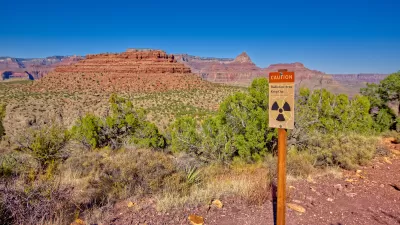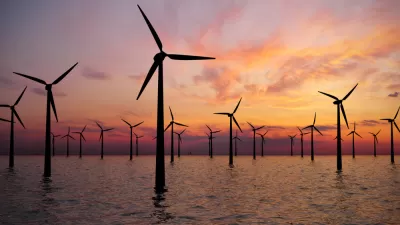Charles C. Mann reports on the benefits and obstacles to cleaner coal and why we need to explore carbon capture and storage even as we transition to renewable energy.
While renewable energy use has increased in the United States, Charles C. Mann reports that China, the largest emitter of carbon dioxide, will continue to depend on coal. As such, China is investing more on reducing the environmental impacts of coal by pioneering carbon capture and storage (CCS) at a larger scale than experimented elsewhere.
Mann reports: “China is launching CCS schemes...faster than any other nation, and the country is unique in its determination to address the emissions from coal-fired plants” versus similar U.S. facilities that “mainly take in CO2 from natural-gas wells and refineries—a worthwhile task but of only secondary importance.”
Opponents of CCS are concerned with three main constraints:
- Inheritant costs: “CCS will eat up 20 to 30 percent of a power plant’s output. Given that typical coal plants can translate only 50 percent of the energy in coal into electricity, deploying CCS means that power plants will consume 40 to 60 percent more of the black stuff.”
- Untested coal-stripping methods in the CCS process, and
- Concern regarding secure storage: “In practice, [carbon dioxide] needs to be stored only for a century or so, the time required for the carbon dioxide to combine with the surrounding stone and form stable minerals. Still, nobody is yet sure how to safely contain CO2 for even that long.”
Yet, Mann reports that CCS remains an optimistic method in securing our energy use until our ability to store and depend on renewable energy improves: “Energy experts believe that it will be at least a century before modern societies can truly convert to renewable energy. Until then, they argue, carbon capture and storage is the only way to deal with the 10.4 billion tons of carbon dioxide that the world’s coal-fired power plants throw off annually.”
Innovations such as CCS are pertinent: “More than a century’s worth of coal remains beneath the surface—an amount so large, two University of Victoria climate scientists calculated in 2012, that burning it all would raise Earth’s average temperature as much as 44 degrees Fahrenheit. In fact, this estimate comes with an asterisk, because after temperatures hit a certain point, current climate models break down, making the future almost impossible to predict.”
FULL STORY: Renewables Aren’t Enough. Clean Coal Is the Future

Planetizen Federal Action Tracker
A weekly monitor of how Trump’s orders and actions are impacting planners and planning in America.

Map: Where Senate Republicans Want to Sell Your Public Lands
For public land advocates, the Senate Republicans’ proposal to sell millions of acres of public land in the West is “the biggest fight of their careers.”

Restaurant Patios Were a Pandemic Win — Why Were They so Hard to Keep?
Social distancing requirements and changes in travel patterns prompted cities to pilot new uses for street and sidewalk space. Then it got complicated.

Platform Pilsner: Vancouver Transit Agency Releases... a Beer?
TransLink will receive a portion of every sale of the four-pack.

Toronto Weighs Cheaper Transit, Parking Hikes for Major Events
Special event rates would take effect during large festivals, sports games and concerts to ‘discourage driving, manage congestion and free up space for transit.”

Berlin to Consider Car-Free Zone Larger Than Manhattan
The area bound by the 22-mile Ringbahn would still allow 12 uses of a private automobile per year per person, and several other exemptions.
Urban Design for Planners 1: Software Tools
This six-course series explores essential urban design concepts using open source software and equips planners with the tools they need to participate fully in the urban design process.
Planning for Universal Design
Learn the tools for implementing Universal Design in planning regulations.
Heyer Gruel & Associates PA
JM Goldson LLC
Custer County Colorado
City of Camden Redevelopment Agency
City of Astoria
Transportation Research & Education Center (TREC) at Portland State University
Camden Redevelopment Agency
City of Claremont
Municipality of Princeton (NJ)





























